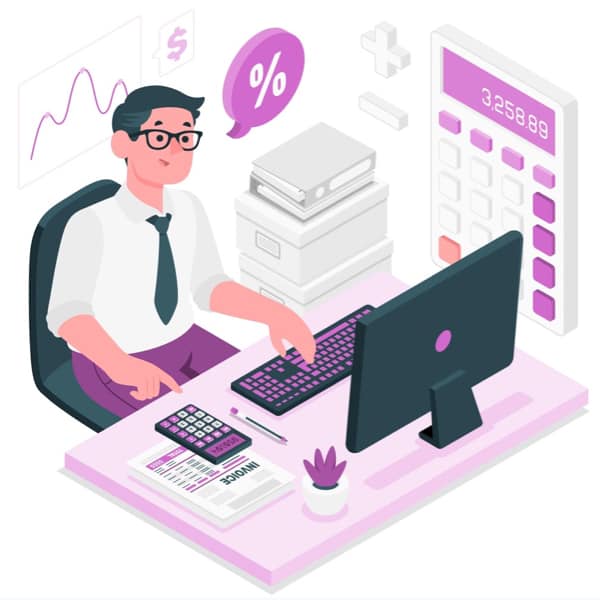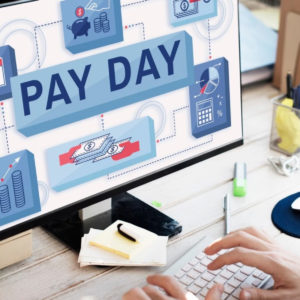
20 Jun What Are the Main Objective of a Payroll System?
The objective of a Payroll System
The payroll system is an important part of any company’s administration. It deals with the payroll records and other information such as working hours, salary, benefits, deductions, etc. These details are necessary for companies to know how much tax they need to pay on employee salaries and benefits, what type of benefits they offer their employees and how those benefits compare to those offered by other companies. Most importantly, the payroll system helps ensure that all employees are paid accurately and on time. It’s an essential part of your company’s administration; however, if ignored or not used properly, it can become useless over time.
What is a payroll system?
A payroll system is a computer program or app that stores employee data and generates reports on employee working hours, salary, and deductions. It’s important to understand that when a company hires new employees, they must provide the payroll system with their data, including their names, addresses, and other personal information. After that, it stores the information to be used whenever needed. If a company has a more significant number of employees, the payroll system can be automated, which means it can do the job independently, without human intervention. The payroll system can be located anywhere in the company’s offices or branch offices. Today it is very common to find payroll systems that run on the cloud. These cloud-based systems does not require any infrastructure to run and can significantly reduce your IT costs.
How does a Payroll System work?
The payroll system handles all employees’ payroll information, such as their working hours, salary, benefits, deductions, and so on. The data is fed manually or electronically from the employer to the payroll system. After that, the system calculates how much each worker should be paid. This data can also be sent to payroll processing companies or the bank to process the payouts. Some payroll systems have the option to collect taxes and send a weekly or monthly pay slip to each employee. If the payroll system is electronic, it can also send reports such as a pay slip, an accounting report, and a benefits report. A payroll system can be customized to the company’s specific needs, such as tracking each employee’s working hours and providing benefits such as health insurance, paid vacation, etc. Some payroll systems can even calculate salaries according to a specific formula.
The 3 Main Parts of a Payroll System
Human Resources
The department that manages the employees. They create job descriptions, recruit and hire new employees, and manage their benefits, paid or unpaid.
Financial
The department that manages the company’s finances. They take in money from employees, process payments, and generate reports.
Operations
The department that manages the company’s operations. It schedules employees’ working hours, maintains equipment, and keeps track of their productivity.
Types of payroll systems
Excel Based
This payroll system is the most common type that is used in small to medium-sized companies. It’s a simple system that requires no programming skills and can be used by just about anyone. You set up all the necessary payroll information in Excel, then export that information as a CSV file, which you then import into the payroll system.
Application Based
This payroll system has more advanced features that can make it easier to use for large companies with many different departments and employees. These systems can integrate with third-party services such as HR management software and payroll tax service and provide monitoring tools. You can also schedule jobs and run reports from a centralized location.
Cloud Based
This payroll system is based on a cloud-based software so that it can be accessed by employees from any device such as a computer, mobile phone, or tablet. It can be accessed via an app, so you don’t have to store data in a certain way.
Hybrid Based
A hybrid payroll system combines the best of Excel-based and application-based systems. It can access cloud-based services, have easy-to-use interface, and can be used by just about anyone.
Benefits of using a payroll system
Efficient use of management hours
When you track your employees’ working hours, it enables you to schedule them in an efficient manner. For example, if there are no customers waiting for repairs, you can schedule your employees to work on fixing broken items, such as broken chairs or tables.
Regular employee reviews
It’s important to regularly review your employees’ performance to ensure they are doing their jobs well. You can track their working hours and schedule reviews at predetermined intervals.
Tracking benefits, deductions, and taxes
In order to know how much taxes you need to pay on an employee’s salary and benefits, you need to track them. A payroll system does this by tracking taxes, benefits and deductions.
Tracking resignation and termination dates
If a person resigns or is terminated from the company, you need to know this date so you don’t pay the person’s salary and benefits. A payroll system can be used to track such information.
Auditing and reporting
A payroll system can be used to generate reports such as a wage slip, an accounting report, and a benefits report. Different payroll software offers many different reports and auditing features, so you can choose the best one that meets your needs.
Hands-off operation
You don’t need to be present in the company’s offices during business hours to benefit from a payroll system. You can schedule the tasks in the system to be performed automatically.
Less risk of errors
The payroll system calculates salaries and benefits, so human errors are less likely to occur.
How reliable is a payroll system?
Payroll systems can be reliable or unreliable. Reliability can be affected by the quality of the software, the amount of testing the system undergoes, and how often it’s maintained. The easiest way to ensure reliability is to hire a reliable company to handle the system’s maintenance. Another way to ensure reliability is to use a tested and certified payroll system. A payroll system is certified when it passes all necessary tests and requirements, such as being able to run correctly, without errors, and without creating issues that affect other parts of the company.
Why do you need to use Electronic payroll?
The benefits of using a payroll system are well documented, but it’s worth pointing out again the advantages of using an electronic payroll system. When you use a paper-based payroll system, there’s a high risk of human error and a system glitch could cause a delay in processing payments. Many companies want to avoid these risks, and for a good reason.
Also Read: Tips to avoid payroll errors.
When a payroll system breakdown forces you to delay payroll payments, it can seriously disrupt your business operations. A payroll system is an essential part of any business. When it comes to deciding whether to use paper or electronic payroll, the reliability, and security offered by a cloud-based system make it the obvious choice. This type of system is highly reliable, as it’s backed up by a dedicated cloud infrastructure that’s owned and operated by a third party, so it’s protected from any hardware failures.
Conclusion
The best way to ensure that your payroll system is reliable and secure is to use a cloud-based system, which provides the best combination of reliability and security. These types of payroll systems are highly reliable, and they are backed up by a dedicated cloud infrastructure owned and operated by a third party, so they’re protected from any hardware failures.




